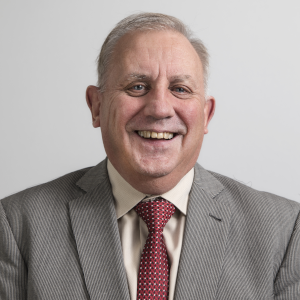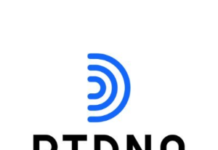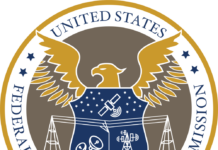
(By Chris Byrnes) Jeff Vidler of Signal Hill Insights and Radio Connects asked 1,510 Canadians in July this year where when and why they listen to various audio platforms including radio, music streaming services, listener owned music, and podcasts.
In this article I will focus on the findings for radio so let’s start by listing the top 7 reasons why people say they listen to radio in 2021.
- To get Information
- To feel connected
- To be Entertained
- To pass the time
- To learn something new
- For company when I am alone
- To relax
What does this mean for your radio station and air talent? Let’s dig into each of these 7 areas and allow me to offer some thoughts on each, and how you might benefit from these findings.
Information: There are lots of different types of information and today people can get information from lots of different platforms. But for radio, I believe the key is to always look for the most relevant information that is likely to impact the lives of your average listener.
The other night, the QEW from Hamilton to Niagara was closed because of a major accident trapping thousands of commuters for up to five hours. That was probably the most important story to those that were impacted. They needed to know what happened, how long the highway would be closed, and when they would be able to get to their destination. Information that is important to your target listener is likely to be local, and local means within 50 kms of their home for most people, as they are working from home because of Covid. Beyond the surveillance information (traffic, weather etc.) listeners expect you to deliver information that they are interested in. It might be a new trend, something to do with their free time, or something you noticed on your way to the office that you feel is worth passing along.
There is always lots of local or regional information that can be found, so develop a system to seek out and bookmark relevant websites, check out Google Trends, Yahoo News, Buzz Feed and social media platforms, looking for content that may not make it into a newscast, but your audience will appreciate. Also ask your co-workers what they have seen and check with friends as good local content can come from lots of different places. Challenge yourself to have at least one break per hour that fits the #1 reason people listen to the radio today – to get Information.
To Feel Connected: I believe that people listen to a radio station not just “10 in a row” or “The Greatest Hits.” They listen because of the unique relationship great radio has with its fans. It is all about being in the moment, connecting listeners with their favorite music, people, and topics, and reflecting the community. Connecting is something great personalities do each and every day, and they make it seem so effortless. The stand in guests on the TV game show Jeopardy are finding out how difficult this is, as they try and emulate the great Alex Trebek. Alex was the master of making the contestants feel relaxed, he had a soothing voice, a relatable wit, and a composed temperament.
As an air talent you need to make your own connections with your audience. It starts with who you are and what you stand for. I also firmly believe that what you do in your local community is also important. To be successful you need to be engaged in your local community and ideally be visible in it. When listeners hear you talking about the things you are doing in your local community and listening to you telling relatable stories about your experiences in your local community this helps you make that important connection.
When we hear listeners talking about their favourite radio personalities in focus groups, they say things like “They are someone I’d like to meet and have a beer with” or “It feels like I have known them all my life” or “They make me laugh and help me get my day off to a good start.” This confirms that these personalities have made that critical connection with their listeners. This is one of the key benefits that radio provides and Pandora, Spotify and Apple would like to emulate. It is a benefit that we need to nurture and grow if our industry is to survive.
Personalities need to think about their personal brand and how they will connect with their audience and then develop a plan to bring it to life. However, if you are voice tracking into several markets or tasked with delivering a national show, this becomes more difficult, and requires you to work even harder to make that connection. But if you are lucky enough to be on the air live or voice tracked in the market you live in, then you have an unfair advantage so exploit it. Doing so will increase the odds that you will not be replaced by an out of market voice tracked talent or national show down the road.
To Be Entertained: This starts with show prep and ends with the actual delivery, but there are steps in between that are often missed by talent which results in the break falling short of its potential and not entertaining the audience. I get that entertainment can be subjective and what one person finds entertaining, another may not. But the best way I know to up the entertainment value it to follow A Six-step Process:
- Carefully selecting content you feel confident will be of interest to your target audience. The most entertaining talent show prep 24/7. They are always on the look out for ideas and content and they gather up pages and pages of ideas for each show.
- Ranking each bit or idea and editing or throwing out the weakest bits.
- Looking at each bit and deciding how it will be presented in such as way to get the maximum entertainment value from that bit.
- Deciding where in the show this content will be delivered. Remember you should always deliver your best bits when you have the most people listening to your show.
- Practicing that break and editing out all the words that are not required. Some talent will rehearse a break three and four times until they are happy with it.
- Delivering the break as practiced.
Try this six-step process for a few weeks and see if this helps improve your “entertainment quota.
Helping your audience pass the time: Radio listeners are mostly loyal to their favourite radio station. In Canada listeners spend 58% of their radio listening time, listening to their favourite radio station. That grows to 86% when you combine their three favourite radio stations. Why is this? My belief is that it is because of the emotional connection a listener forms with the format, the radio station, and especially the personalities on that station. Radio stations who program their content to help listeners through the day tend to be the most successful. This could be commercial free hours, specialty shows or unique features. Announcers can help the audience through their day by thinking about what the average listener is doing at that time of the day and finding ways to relate to them. By the way, this same research study asked people what they were doing while listening to the radio, and here are the top 7:
- Commuting by car
- Shopping/running errands
- Relaxing at Home
- Working
- Doing chores
- Eating
- Driving kids to school/activities
AM/FM Radio carves out a distinct profile, most frequently riding shotgun as listeners commute, shop or run errands in their vehicles. Consider writing out several breaks that relate directly to people doing each of the above activities, and then look at when and how to incorporate that content into your show.
To learn something new: Finding and delivering new trends, ideas or content that is of interest to your target audience is something I have always believed is important and this research confirms it. The listener not only want to be entertained but also learn something. John Tesh does this on a regular basis and incorporates his intelligence for your life breaks into every show.
Radio has been the companion for listeners for over 100 years and perhaps was the way your parents or grandparents first learned of important world and local events. Over time other media and other technology platforms have eroded this unique benefit and now you might get some of this information from social media platforms which are guilty of often delivering news that is not accurate and in some cases is completely false. However, the radio personality is normally a trusted voice in the community, and can both inform and connect with listeners by telling them something they did not know. Therefore, as part of your show prep, actively seek out this type of information and then present it in an interesting and relevant way.
For company when I am alone: Radio was the original social platform in that it connected with people and helped form a community of likeminded listeners. One of the benefits of this is that it helped people feel less alone.
The number of people living alone in Canada has more than doubled over the last 35 years, from 1.7 million in 1981 to 4.0 million in 2016. Solo dwellers represented 14% of the population aged 15 and over living in private households in 2016, up from 9% in 1981. The fastest growing age demographic of people living alone today are people aged 35 to 64 because of higher divorce and separation rates.
The baby boom generation is now transitioning into their senior years and experts believe this generation will be at a higher risk of experiencing social isolation since baby boomers have had fewer children on average than previous generations. They have also experienced higher rates of union dissolution, which may impact their frequency of contact with their children. And because of COVID-19, these numbers are even higher today than ever before.
I was speaking with the PD of a radio station that targets people over the age of 50 and he told me that they have seen a dramatic increase in the number of letters, emails and text messages from listeners thanking them for being there and helping them feel less isolated during this pandemic. Think about this as you write imaging for your station and as you brainstorm with your air talent on ways to relate to and help listeners who are feeling isolated and alone.
It was not that many years ago that we had announcers on the air live 24 hours a day, but with developments in technology (automation and voice tracking), relaxing of regulations, and revenue pressures, that most radio stations today have fewer announcers on the in live or even voice tracked day-parts. But with some thought and creativity perhaps there are ways radio stations can do even more to help listeners feel less alone.
To relax: Depending on the format radio can do a great job of setting a mood and helping people relax. Often it starts with the music. Ever wonder why movie producers pay lots of money for the rights to include songs in a movie? The right music helps set the scene, sparking emotions from the viewer, even telling a story all on its own, elevating our experience and bringing us into the world being shown before us. A film’s soundtrack is one of the most important parts of the movie-going experience, whether we realize it or not.
Think about when Jack and Rose kissed on the bow of the Titanic as Celine Dion’s “My Heart Will Go On” blasted out of the movie theatre sound system. It added to the drama, heartbreak, and romance of the movie and went on to become one of the biggest selling songs of 1998 and perhaps of all time.
Pharrell Williams “Happy” gave “Despicable Me 2” the lift it needed, and we were all clapping “along if you feel like a room without a roof” even though we had no idea what those lyrics meant!
The school detention scene in the coming-of-age movie “The Breakfast Club” was made so much better when Simple Minds belted out “Don’t you forget about me.”
Radio does a great job of setting the mood for an audience with not only the music it plays, by the imaging and the style and delivery of the announcers.
That is why smart programmers sound code all the music and use computer software to schedule and manage the music playlist. But a computer can only do so much of the job, and it requires someone with a good ear and a solid understanding of the target audience to edit the log for flow and tempo.
When you hear a well programmed radio station, the music flows perfectly and is enhanced by the imaging and the personalities. Radio stations that help their audience relax after a long day at work tend to have great Time Spent Listening numbers. Some formats perform better than others and these days, Country and Classic Hits are outperforming other formats.
So give thought to how you might use day-parting of songs, and what specialty programming might be worth incorporating into your week to help your audience relax as they listen to your radio station.
Conclusion
This could be one of the most important pieces of research that our industry has seen in a long time. It shows that AM/FM Radio stands alone as the audio most widely used to “get information” and “feel connected.” It also shows that radio is firmly on the last mile in the path to purchase. Radio is the ultimate medium for timely messages to reach consumers when they are out, about and ready to spend.
Jeff Vidler summarized the study by making two important observations:
AM/FM Radio serves a particularly distinct set of needs and use cases, reaching listeners when they are seeking information and connection and when they are out and about.
Programmers looking to tap into broadcast radio’s unique selling proposition in today’s audio landscape are wise to focus on informing and connecting with their audience.
Chris Byrnes helps radio stations across Canada and beyond get their unfair share of audience. Always happy to talk. Contact Chris at [email protected] or call 905-332-1331.







I was surprised to see that radio listenership is still going strong! I’ve always loved listening to the radio during my daily commute, it’s a great way to pass the time and stay updated on current events. The article’s mention of podcasting climbing up the charts is interesting too – I’ve started listening to a few podcasts myself and I can see why they’re so popular!
I found this article really interesting, especially the part about the rise of podcasts and how they’re becoming more popular than traditional radio shows. As someone who still listens to the radio frequently, it’s great to see how the medium is evolving and adapting to the changing times. I’m looking forward to seeing how radio continues to evolve in the future!
The answer lies in the unique experience that radios provide. They connect local audiences, create communities of shared interest, and provide entertainment on the go. But most importantly, the radios are free and available almost anytime, anywhere.
These days, nearly everyone owns a smartphone. Radio remains well-liked despite this. The appeal of radio is widespread, from homes to autos. And it does not appear as though it will slow down in the near future.
I agree with you when you said that radio is great because they have to carefully select the content that they plan on airing and it really makes it much more enjoyable. It’s great to listen to well-curated and selected music works. It makes it so I discover new artists I wouldn’t have found otherwise. Something that having my own music playlist won’t be able to give me. I’ve been playing with my own music for a few years now but I thought to look for some good music radio streaming services online, I used to listen to radio stations when I was younger and I hope to find a good one again soon.
Probably the two that should be focused on are a) to feel connected and b) for company. The times we’re living in with so much fear & division call for a stable presence in people’s lives. Radio can fill that bill like no other medium. This can be accomplished by focusing on being “live & local”, and being an active & highly visible participant in the community. Be real and be present. I bet you’ll see a nice top-line revenue increase.
Bang on, Chris!
Nice information-one of those kick in the head reminders of why we got into this in the first place. Having the big production voice/laser background sweepers running 12 time an hour when the (name) show has (name) only 4 times an hour does run counter to a lot of the info here. Early on we had liners, but the air talent delivered them in their own way rather than to drive home “The best mix of the best hits of the best artists” with a different voice who meant very little to the listener. With all due respect to Charlie Van Dyke, Jeff Laurence, Joe Cipriano and the other great imaging voices-your job should be to enhance what the air talent does, not replace it. Even in a voice tracked situation, it would be easy to add a lot of the above listed elements with very little effort-and $0 additional cost.